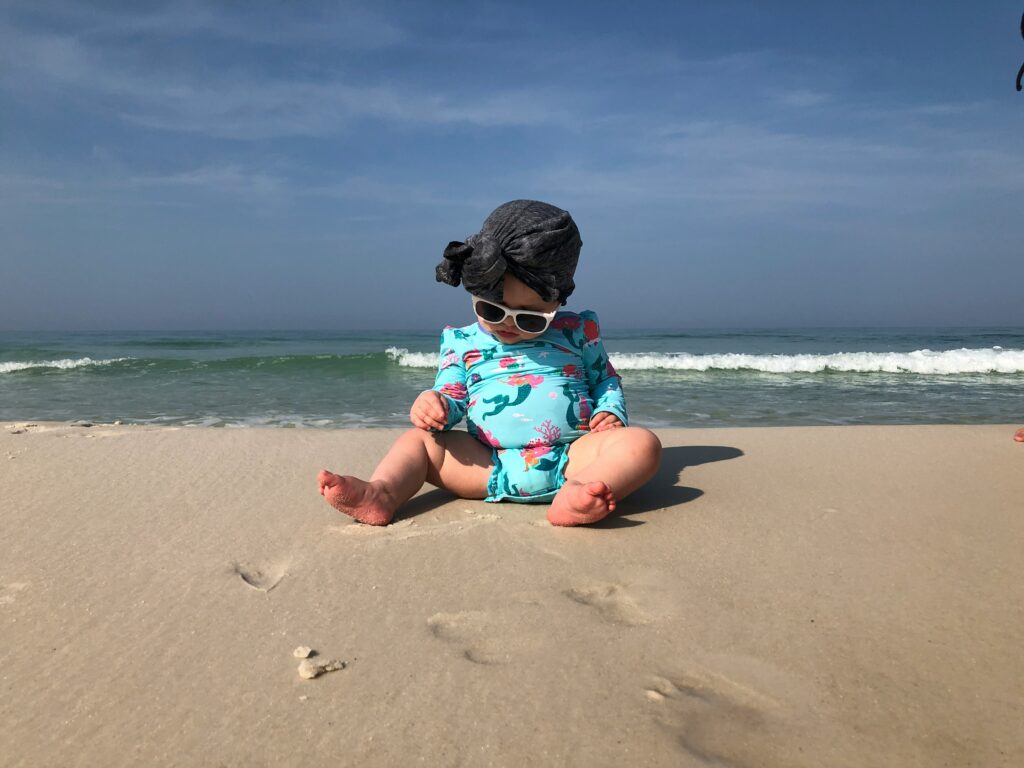Planning a beach day with your baby? Hold up—there’s more to it than packing sunscreen and a cute sun hat. You might picture soft waves, sunshine, and adorable sandy footprints, but bringing a baby to the beach is a whole different ball game. Think scorching heat, unpredictable nap schedules, and saltwater everywhere.
Sounds stressful?
Don’t worry—we’ve got you covered.
We’ve got your back. This guide walks you through everything you need to know before setting foot on the sand with your baby.
1. Timing Is Everything
If you’re heading to the beach with a baby, the time of day can make or break the experience. Early morning or late afternoon is your best bet—before the sun gets too intense and crowds roll in. These hours are usually cooler and more peaceful, which helps with keeping your baby comfortable and content. Midday sun is no joke, especially for sensitive baby skin. By planning your visit around your baby’s nap schedule and avoiding the peak heat, you’ll not only keep your little one safe, but you’ll also enjoy the beach instead of counting down until it’s time to leave.
2. Don’t Skimp on Sun Protection
Babies under six months shouldn’t use sunscreen, so if your baby’s in that age group, focus on protective clothing and shade. Wide-brimmed hats, long-sleeved rash guards, and UPF-rated fabrics are your best defense. For older babies, use mineral-based sunscreen with zinc oxide or titanium dioxide, and test a small patch beforehand.
Reapply often, especially if there’s water play involved. And don’t forget the ears, feet, and back of the neck—those sneaky spots are easy to miss but burn quickly. A pop-up tent or umbrella provides extra coverage and gives your baby a shaded spot to rest or play.
3. Choose the Right Swimwear
Not all baby swimwear is created equal. You want something cute, sure, but also functional. Look for swimwear that offers sun protection (think UPF 50+), is easy to get on and off, and is made with soft, breathable fabric. If you’re shopping for a boy, check out baby boy swimwear options that come with rash guard tops and a comfort-stretch waistband—they’re practical and comfy for all-day wear. Skip outfits with lots of snaps or stiff materials, as they can be uncomfortable and tough to manage. The right swimwear keeps your baby cool, protected, and ready to enjoy the waves.

4. Pack Like a Pro
The key to a successful baby beach day? Overpacking—just a little. Besides the obvious sunscreen and swimwear, bring multiple towels (including one just for diaper changes), baby wipes, swim diapers, a sun hat, and a change of clothes.
Don’t forget snacks, a sippy cup or bottle, and a cooler with cold water. A beach mat or waterproof blanket gives your baby a clean spot to play, while a mesh bag makes it easier to shake out the sand. Bonus tip: toss in a small portable fan and extra plastic bags for trash or wet clothes. You’ll be glad you did.
5. Keep Sand in Check
Sand gets everywhere. It’s one of the biggest surprises for first-time beach parents. While your baby might love digging tiny hands into the sand, it’s not always ideal, especially when it ends up inthe eyes, mouth, and diaper. Bring a small brush or baby powder (it helps dry sand slide off skin) to clean feet and hands before feedings.
A fitted crib sheet turned upside-down with bags or coolers at the corners can create a sand-free zone for your baby to rest or play. Sand will find a way in no matter what, but with a few tricks, you’ll keep it manageable.
6. Don’t Count on a Nap
You may dream of a snoozing baby under a sun umbrella while you soak up the waves. Reality? Most babies struggle to nap at the beach. The noise, the heat, and the new surroundings make sleep tough. If your baby does nap, great—just be prepared for it not to happen.
Bring a lightweight stroller with a good canopy or a carrier with breathable mesh to encourage rest on the go. Keep your expectations low and go with the flow. Sometimes, a shorter beach trip that ends with a nap at home works better than stretching it too long.
7. Stay Cool and Hydrated
Babies can’t regulate their body temperature as well as adults, so keeping them cool is top priority. Offer fluids often, whether it’s breast milk, formula, or water (if your baby’s old enough). Dress them in lightweight, breathable fabrics, and use a damp cloth to wipe down their neck and back when they start getting flushed.
A shaded area is essential, but so is airflow—stagnant hot air under a tent can be just as bad. If your baby seems overheated, take a break from the beach altogether. Keeping things cool helps everyone stay calm and safe.
Conclusion
Every beach day with a baby has its challenges, but with a little planning, it can be smooth sailing .From sun protection and hydration to timing and packing smart, knowing what to expect makes all the difference. And when your baby’s happy, relaxed, and safe? That’s when the magic happens. Your beach day becomes more than just a quick outing—it turns into a memory worth holding onto.
You may also like
Best Places to Visit in Spain During Summer
